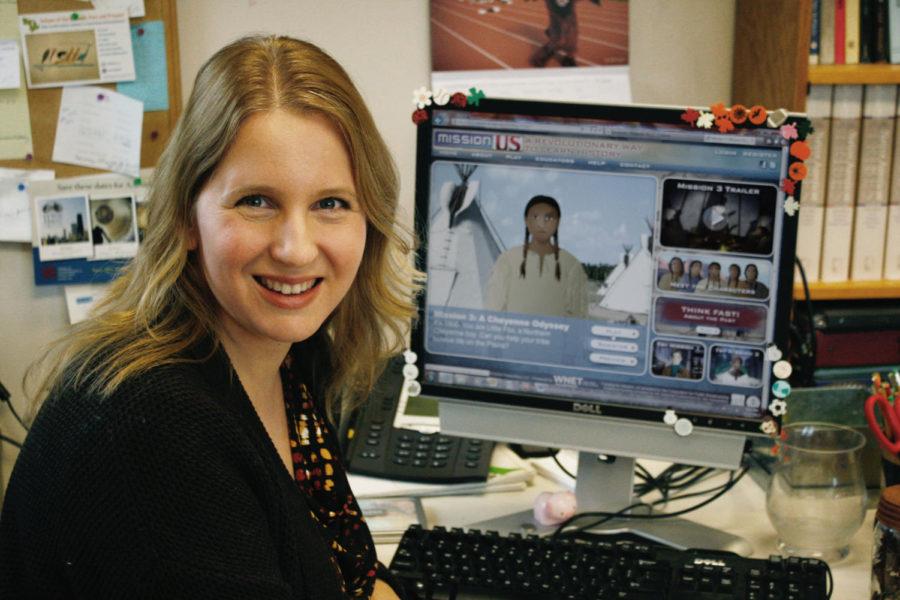Anthropology professor helps PBS develop video game
Brandi Boyett/Iowa State Daily
Christina Gish Hill, assistant professor in anthropology, was involved with the production of the PBS educational game Mission US: A Cheyenne Odyssey. Gish specializes in Cheyenne history and helped to make scripts for the game and ensure that it is factually accurate.The game, intended for middle-school age children, is available at www.mission-us.org.
November 12, 2013
An ISU professor has helped PBS in developing an educational video game that puts the gamer in the shoes of a member of the Cheyenne tribe.
Christina Hill, associate professor of anthropology, has worked with PBS for the last year and a half developing a video game about the Northern Cheyenne tribe.
The game is called “Mission U.S.: A Cheyenne Odyssey” and chronicles the life of a young Cheyenne boy in the 1860s. It follows him from young adolescence to adulthood.
The game is third in a series of video games that PBS is producing to teach middle school to high school students about American history.
Hill said she approved of the way the video game presents history.
“They take these slices of American history that are really important, that involved the big picture of the United States and global issues,” Hill said. “Then, they follow one person and look at how all of these huge forces in history affect that one person. It’s a really cool idea.”
The other two video games that have been produced follow a boy in Boston during the American Revolution and an black girl in the South before the Civil War.
Hill also said her game makes it easy for students to connect to the characters.
“It’s kind of personal, too, because the character is the age that the students are at,” Hill said.
Natalie Eckert, freshman in family and consumer science education and studies, thinks the game would be a valuable asset in a classroom.
“It seems like a very cultural game,” Eckert said. “One thing that really stood out to me was how the characters interacted. For instance, the main character didn’t talk to his sister as a sign of respect for her, which is very different from our way of doing things. It really helps you learn more about the culture.”
The video game developers at PBS contacted Hill because of her expertise in the subject area. She proofread scripts, helped create the story and worked with the finished version of the game to make sure everything was correct.
“The video game is just great,” Hill said. “It’s a little bit like ‘Choose Your Own Adventure,’ so you make choices throughout the game, and depending on your choices, the end result is different.”
Hill said she was impressed by how much effort PBS put into the game to ensure it was as accurate and authentic as possible.
“Not only did they contact me and work really closely with me as an anthropologist and an ethno-historian, but they also contacted the Northern Cheyenne community,” Hill said.
“They worked really closely with the president of the tribal college and took the video game out to the kids in schools there and had them play the game and provide feedback from the Cheyenne students themselves.”
Although actors voice the main characters, members of the Cheyenne community voice many of the other characters.
“It has this really authentic feel, and it’s not only something that presents American history in a positive and informative light for school-age kids, but it’s something that the Cheyenne people themselves can really be proud of,” Hill said.

















